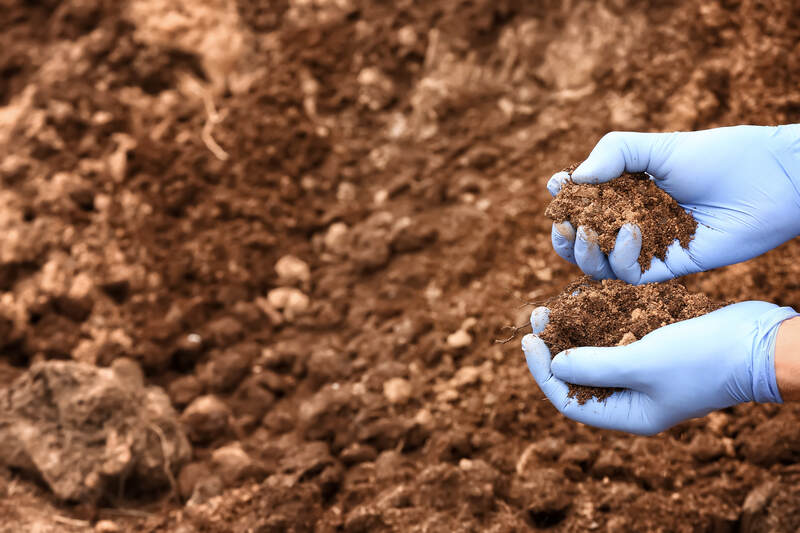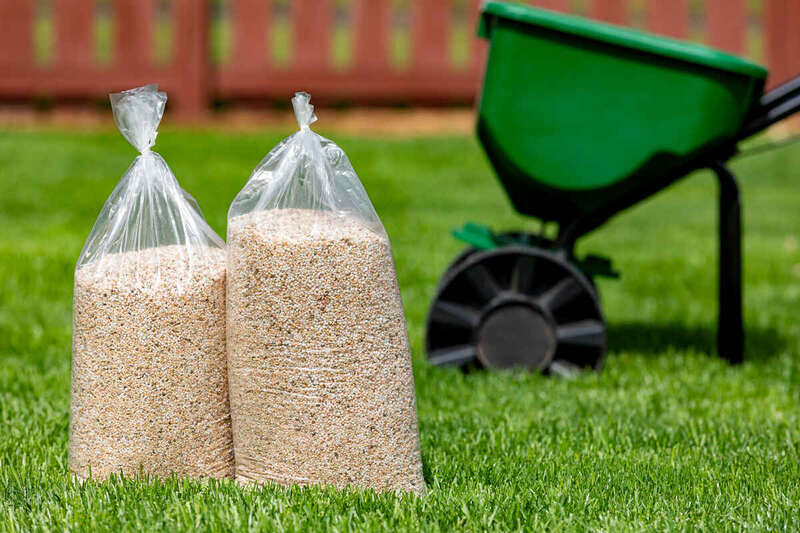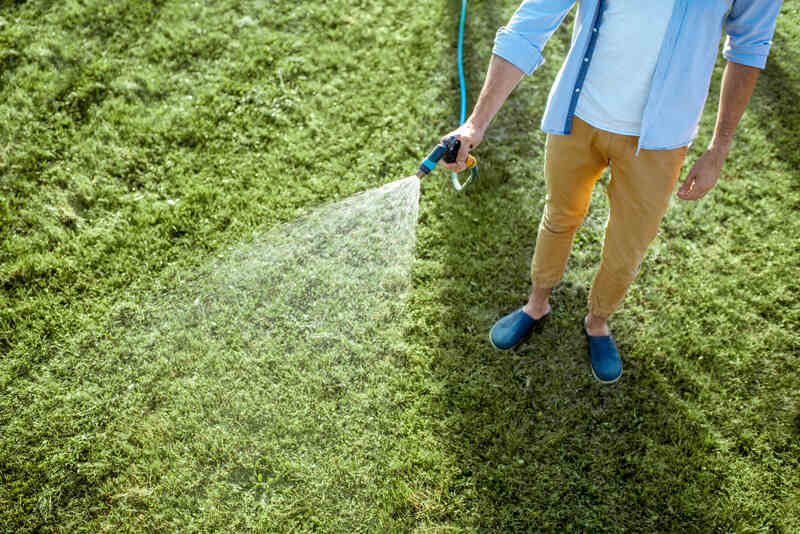
To keep your lawn looking great through summer here in Akron is pretty simple. Just follow a few simple summer lawn care tips, such as soil testing your lawn and fertilizing at the right time.
Let’s get started on your summer lawn care tasks in the Rubber Capital of the World:
Test Your Soil

Conduct a soil test to know what type of grass you have and the conditions of the soil. Why this is important: There are different types of grass, and each type needs specific care. The type of grass you have will help you answer these questions:
- How much water?
- How often do you mow?
- What additional nutrients does your grass need?
The best grass types for Akron are cool-season grasses, like Kentucky bluegrass, perennial ryegrass, tall fescue, and fine fescue.
What’s your soil type? Soil can be sandy, loamy, silt, clay or a mixture of the four. They all have different pros and cons. A soil test can help you learn what type of soil you have and what it needs to give your grass an excellent environment to grow.
See Related:
— Guide to Growing Cool-Season Grasses
— Why, When, and How to Test the Soil pH of Your Lawn
— Guide to Growing Kentucky Bluegrass
— Guide to Growing Perennial Ryegrass
— Tall Fescue Lawn Maintenance Guide
— Guide to Growing Fine Fescues
Fertilize Your Lawn

When it comes to fertilizing your lawn, your soil test will tell you what is lacking — so you’ll know if you need to add extra nitrogen or more potassium. Then, you can find a fertilizer that fills the needs of both your grass and your soil.
In Akron, it’s best to fertilize in June, around 8 to 10 weeks after the date you’ve fertilized in spring, using a fertilizer with 50% in slow-release form.
See Related:
— How to Fertilize Your Lawn
— How Do You Know You Over-Fertilized Your Lawn?
— Common Fertilizer Mistakes to Avoid
Mow Your Lawn at the Appropriate Height
Your grass needs to be mowed regularly. However, your grass type will determine how often and short you need to mow. Follow these tips:
- Mow your Kentucky bluegrass, perennial ryegrass, and fine fescue lawn at 2 to 2.5 inches.
- Mow tall fescue at 2.5 to 3 inches.
- Make sure your lawn mower has a sharp blade, so you don’t harm the grass by chopping at it without smoothly taking off the top.
- Follow the one-third rule: Cut off only one-third of the height of the grass.
See Related:
— Lawn Mowing Tips: How to Mow a Lawn the Right Way
— How to Sharpen Lawn Mower Blades
Water Your Grass

In the summer, you’ll need to water regularly. Most lawns need 1 inch of water each week, and if you aren’t getting enough rain, you’ll need to water the lawn yourself. You can set up a watering schedule with your irrigation controller or manually water, but be sure not to overwater or waste water with runoff or overspray.
Alternatively, you can let your cool-season grass go dormant and just water it to keep the roots and crowns alive. In that case, water lightly with 1/2 inch of water every three to four weeks. Water in the early morning so your lawn can absorb all the water before the sun dries it out.
Tip: Your trees will also need TLC during summer. Luckily, you can visit our tree care page for Akron to get in touch with pros who can do this for you.
See Related:
— How Long to Water Your Lawn in Summer
— Dormant Grass vs. Dead Grass
— Signs Your Lawn Needs Watering
Fight Against Weeds
Even if you applied pre-emergent herbicides in the spring, some pesky weeds can still find their way into your lawn during the summer. Crabgrass is a common culprit that can quickly take over if left unchecked.
For these persistent summer weeds, consider applying post-emergent herbicides to target them. You can also hand-pull them, but make sure to remove the entire root to prevent regrowth.
If you’re struggling against weeds or other summer lawn care chores, by hiring a lawn care pro in Akron.
Read More:
— Best Time to Apply Crabgrass Preventer in Ohio
— When to Apply Weed and Feed in Ohio
— Most Common Weeds of Ohio
— Best Ohio Native Plants
— Best Grass Seed for Ohio
— How to Prepare Your Lawn for Winter in Ohio
— Common Lawn Pests in Ohio
Main Image Credit: Photo of a lawn mowed by a LawnStarter Pro in Akron, Ohio